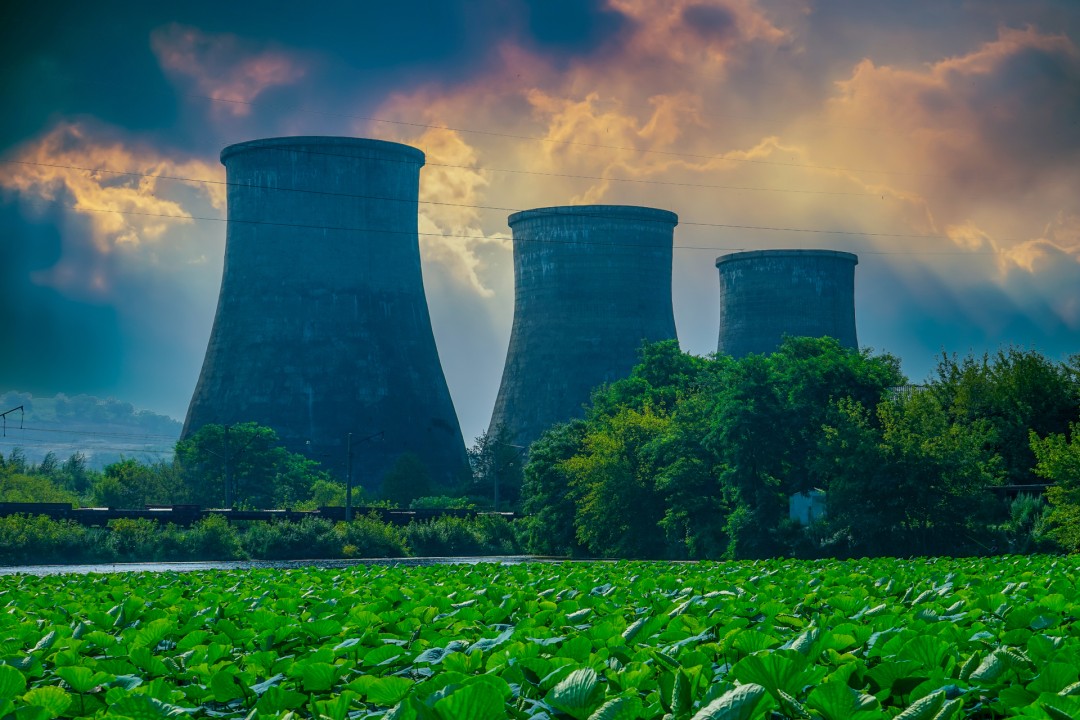
At COP28, Countries Launch Declaration to Triple Nuclear Energy Capacity by 2050, Recognizing the Key Role of Nuclear Energy in Reaching Net Zero. (Energy)
The takeaway from COP28: Gas and nuclear are part of the energy transition (Atlantic Council)
Can China Achieve its Nuclear Energy Ambitions? (VoaNews)
Nuclear Power Is the Only Solution (Time)
Repurposing Coal Power Plant Sites with Low Carbon Nuclear (International Atomic Energy Agency)
‘Nuclear can both complement and compete with renewable energy in the race to net zero’ (Recharge News)
Poland’s minimum target is to have at least 6-9GW of nuclear energy by 2040. The goal is to achieve deep technological diversification, and for carbon free sources (RES and nuclear) to represent almost three-quarters of the energy mix by 2040. (Politico)
California’s only nuclear plant gets state approval for 5-year extension (Reuters)
The imperative for an energy transition arises from various factors, such as the aging of existing infrastructure, the goal of ensuring fair energy prices, and a commitment to environmental and climate protection. The climate-neutrality objective is a driving force behind this shift.
EU targets for reducing greenhouse gas emissions, increasing the share of renewable energy sources, and enhancing energy efficiency have been adjusted in response to the current political reality shaped by the climate crisis, ongoing post-pandemic recovery, and the conflict in Ukraine. Caution is urged against dependency on other countries, particularly China, for crucial resources, emphasizing the need to strengthen the implementation of the Net Zero Industry Act and the Critical Raw Materials Act, promoting technological independence and local supply chains.
The expectation of continued growth in energy demand through 2050, coupled with an anticipated global population increase of two billion people in the next thirty years, complicates the global trilemma—ensuring a reliable energy supply at an affordable price while considering the environmental dimension.
At the United Nations Climate Conference in Dubai (COP28), the nonbinding deal urging countries to transition away from fossil fuels reflects a collective commitment to the evolving energy landscape. Progress is noted in aligning hydrocarbons, particularly gas, with sustainability goals. The revival of interest in nuclear power is highlighted by commitments from 22 countries to triple their nuclear capacity by 2050, emphasizing its indispensable role in achieving net-zero targets.
There are 439 nuclear reactors in operation globally, with an estimated 413GW operating capacity in 2022, accounting for around 10% of global power production. Under the International Energy Agency’s (IEA) Net Zero Scenario, the nuclear industry would need at least to double its capacity by 2050.





Despite the global need for a substantial increase in nuclear power, Western governments and companies face challenges in advancing new nuclear technologies. These challenges include outdated anti-nuclear opinions, high initial capital costs, government-private sector risk-sharing complexities, and a burdensome regulatory framework. The industry responds with innovations to address safety concerns, including microreactors or SMRs and new materials or techniques.
The nuclear industry, riding a wave of enthusiasm, is recognized for its cost-saving potential. Major companies, including Microsoft, are planning to transition to nuclear power, recognizing its role in a coherent energy transition plan. Despite setbacks and public hesitancy stemming from historical nuclear disasters, the scientific reality asserts the safety of the rising generation of nuclear innovation. Small modular reactors (SMRs) are highlighted as safer alternatives.
Nuclear energy will never be absolutely, perfectly, guaranteeably safe because nothing is. Both wind and solar rely on minerals and manufacturing mostly controlled by China, and neither is entirely reliable as a power source. They’re also not dispatchable at times of peak electricity demand. Hydropower only works with abundant water, and droughts are eviscerating rivers across the world. Coal is killing the planet and populations. So is oil. So is natural gas. Geothermal, biofuels, hydrogen, etc., aren’t able to satisfy even a fraction of the demand for energy.
Governments are urged to facilitate the expansion of nuclear technologies through cost-sharing and risk-sharing mechanisms, streamlining market entry without imposing additional regulatory conditions while facilitating the private sector’s initiatives.

Beatriz Canamary is a consultant in Sustainable and Resilient Business, Doctor and Professor in Business, Civil Engineer, specialized in Mergers and Acquisitions from the Harvard Business School, and mom of triplets. Today she is dedicated to the effective application of the UN Sustainable Development Goals in Multinationals.
She is an ESG enthusiast and makes it possible to carry out sustainable projects, such as energy transition and net-zero carbon emissions. She has +15 years of expertise in large infrastructure projects.
Member of the World Economic Forum, Academy of International Business and Academy of Economics and Finance.